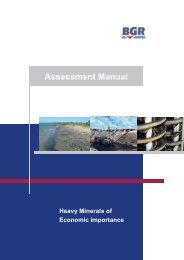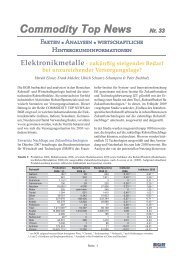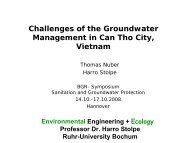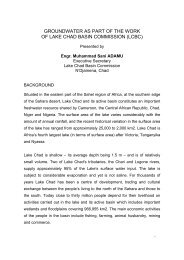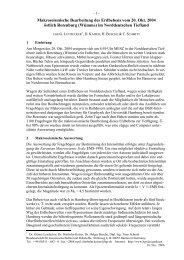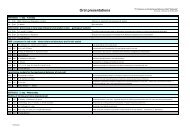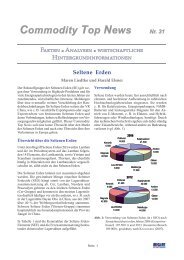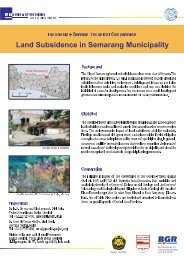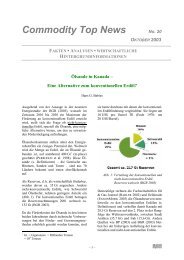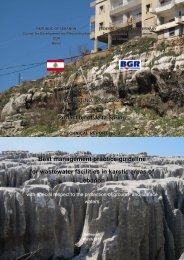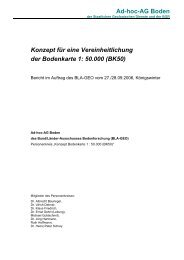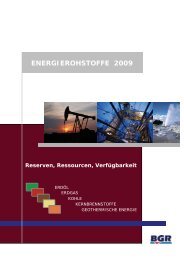THE SMOOTH SOUNDING GRAPH. A Manual for Field Work ... - BGR
THE SMOOTH SOUNDING GRAPH. A Manual for Field Work ... - BGR
THE SMOOTH SOUNDING GRAPH. A Manual for Field Work ... - BGR
Create successful ePaper yourself
Turn your PDF publications into a flip-book with our unique Google optimized e-Paper software.
1.5. The fundamental principle <strong>for</strong> geoelectric sounding on a<br />
layered earth<br />
18<br />
At first we shall explain by a simple model the current density within a<br />
layered underground.<br />
Case 1 (Fig.12)<br />
For explanation we only look at the electrodes A and B on the earth’s sur-<br />
face and their distance L. The layer below the surface has a resistivity ρ1.<br />
Its thickness be h. It is underlain by a second layer infinitely extended.<br />
We assume that this second layer is an insulator (ρ = ∞). When we ob-<br />
serve the distance L in relation to h, we can see that the current can ex-<br />
tend normally within the first layer, that means be hardly influenced by<br />
the insulator.<br />
Case 2 (Fig.13)<br />
We have again the same electrode distance L, but the thickness h of the<br />
first layer has been reduced. By this of course the geology is changed, the<br />
measuring configuration however is still the same. When we look again at<br />
the distance L in relation to h, we can see that the current lines seem<br />
somehow pressed to the surface. As result we can derive: If h becomes<br />
smaller at the same electrode configuration, the current lines will be com-<br />
pressed more and more. There<strong>for</strong>e the current density increases and con-<br />
sequently does the voltage at the potential electrodes. To zoom the insu-<br />
lator means increasing the current density "below our feet" at the centre<br />
point.



